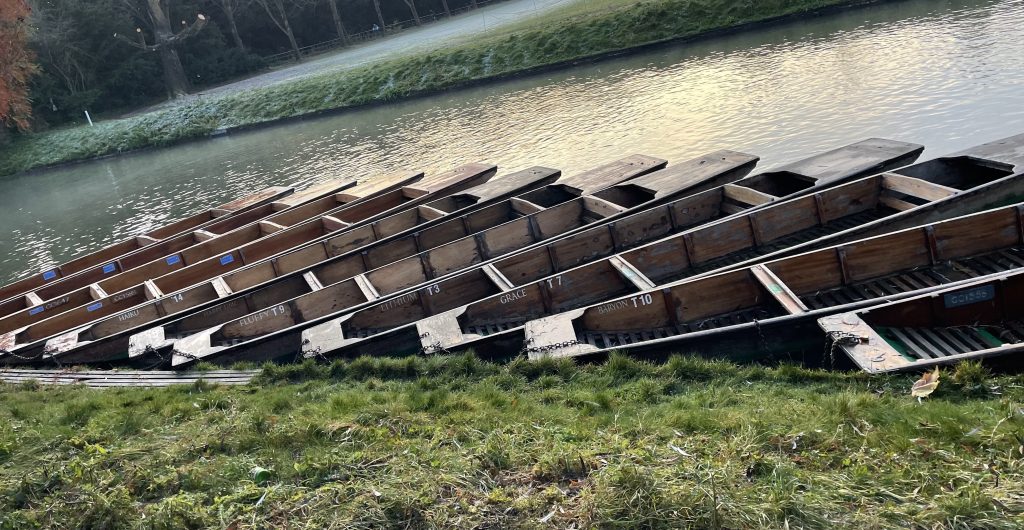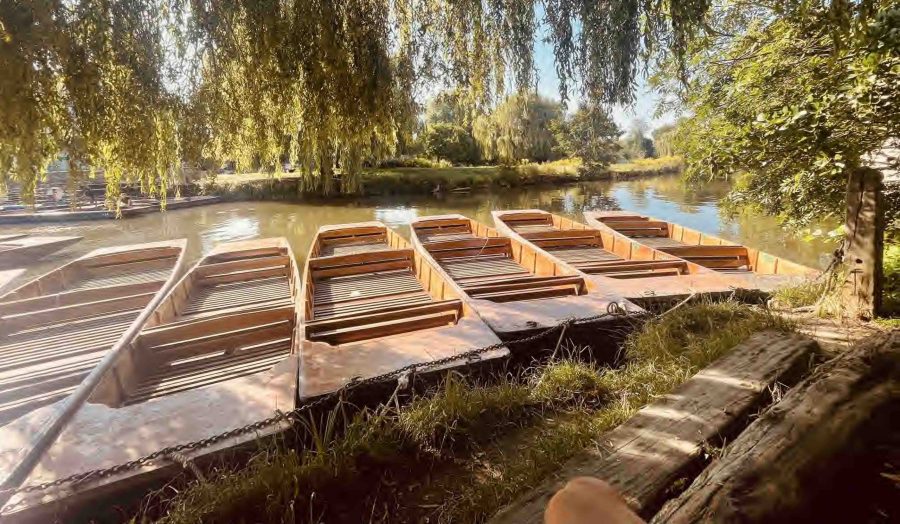Confusingly, the word ‘punt’ has a few distinct and non-related meanings. It can mean to kick a ball, place a bet on a sporting event, and also refer to the term used for the national currency in Ireland before the euro was introduced. Fortunately, however, when in Cambridge, it would be safe to assume that the word punt will almost certainly be used in reference Cambridge’’s number one activity, punting!
The Cambridge dictionary – much more reputable than the Oxford dictionary – defines punt as ‘a long, narrow boat with a flat bottom and square ends, moved by a person standing at one end and pushing on the bottom of a river with a pole’.
The act of punting – another term you will no doubt hear whilst walking along the river – involves pushing a flat-bottom boat along a river with a metal (traditionally wooden) pole. The person pushing the boat is known as the ‘punter’, while the boat itself is called a punt.
The word punt comes from Latin – pontonem, which refers to a boat with a flat bottom. The latin term can also be found in German and Dutch from around the 16th century.
If punting means to ‘push a punt’, then what is the punt? Punts in Cambridge are long flat–bottomed boats, originally used throughout the middle ages as transport throughout the marshlands of the East Anglian Fens.
Punts were the boats of choice to maneuver around The Fens as their flat bottom’s allowed the boat to float effortlessly on very shallow water, whereas a regular boat with a hull would need a minimum depth to avoid being caught on the river bed below.
Another advantage of the punt is its ability to maneuver between obstacles such as trees and rocks by pushing the pole at sharp angles to quickly move the punt from one direction to another, a technique mastered by most professional punters during the busy summer days on the River Cam.
The silence and quick maneuverability of punts made them excellent boats for hunting. Traditionally used for hunting water birds such as ducks and geese, one person would push from the back, whilst the shooter would rest their shotgun on the front deck to take aim.

